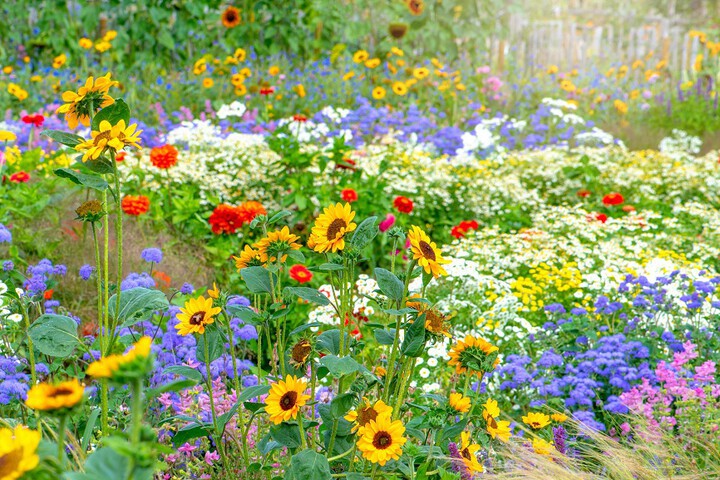From sunflowers to sumac, these plants provide both sustenance and a safe habitat for birds.

The only thing better than a beautiful backyard garden is one that naturally draws—and feeds—local birds. "By growing birdseed, especially in the fall and winter, you are signaling to bird communities that it's a safe space for them to visit all year round," explains Cecilia de Corral, Director of Design and Build at Brooklyn Grange Rooftop Farm.
Not only will growing certain plants in your outdoor area provide a safe habitat and sustenance for local bird communities, it can be beneficial for your garden, too. "Attracting birds to your landscape is not only engaging for us as humans, but it also contributes to a healthier ecology in your garden," de Corral says. "Birds can keep insects and weeds at bay, and some species will also act as valuable pollinators." Interested in growing birdseed in your own backyard? We asked de Corral and Christopher Landercasper, director of farming operations for Sonoma's Best Hospitality Group, to share the plants that will attract and feed wild birds.
Sunflowers
Landercasper says sunflowers are some of the most reliable flowers for producing birdseed. "They grow quickly in almost any climate and can produce either a single large stalk and flower or many smaller heads over the course of several months," he says. "My favorites include Ring of Fire, a multi-branched red and yellow sunflower; Moulin Rouge, a burgundy red multi-branching sunflower; and Mammoth, a single stalk, extremely tall yellow sunflower."
Witch Hazel
If you're searching for an aromatic plant that also provides food for birds, de Corral says to look no further than witch hazel. "Hamamelis virginiana is an amazing contribution to your landscape because of the fragrant late winter blooms," she explains. "Seed pods come soon after the first spring blooms and provide a wonderful food source for local bird communities."
Amaranth
For an easy-to-grow flower that provides ample amounts of birdseed, Landercasper suggests planting amaranth. "This plant can produce hundreds of thousands of seeds on its long branches," he says. "Wild birds love to feed on these, but they can also be cut and brought in to hang up in the cage for your pet birds. Also, if you have a particularly large crop of seeds, you can harvest them to eat yourself!"
Sumac
Why only draw birds to your backyard garden when you can feed beautiful bees and butterflies, too? "Not only does sumac attract birds with the seed and fruit it produces, but it also attracts insects," de Corral says. "Sumac varieties can grow up to 20 feet in height, so ensure that you have adequate space for your plant to establish."
Berry Trees and Bushes
When deciding what plants you can grow to feed your local bird communities, de Corral says you shouldn't feel limited to seed-producing varieties. "Trees and shrubs that produce berries are also an amazing food source for birds, particularly in the winter when there is less available," she says. "Look for plants that will hold fruit through the winter such as Ilex Verticillata or Myrica Pensylvanica to feed your bird communities all year long."